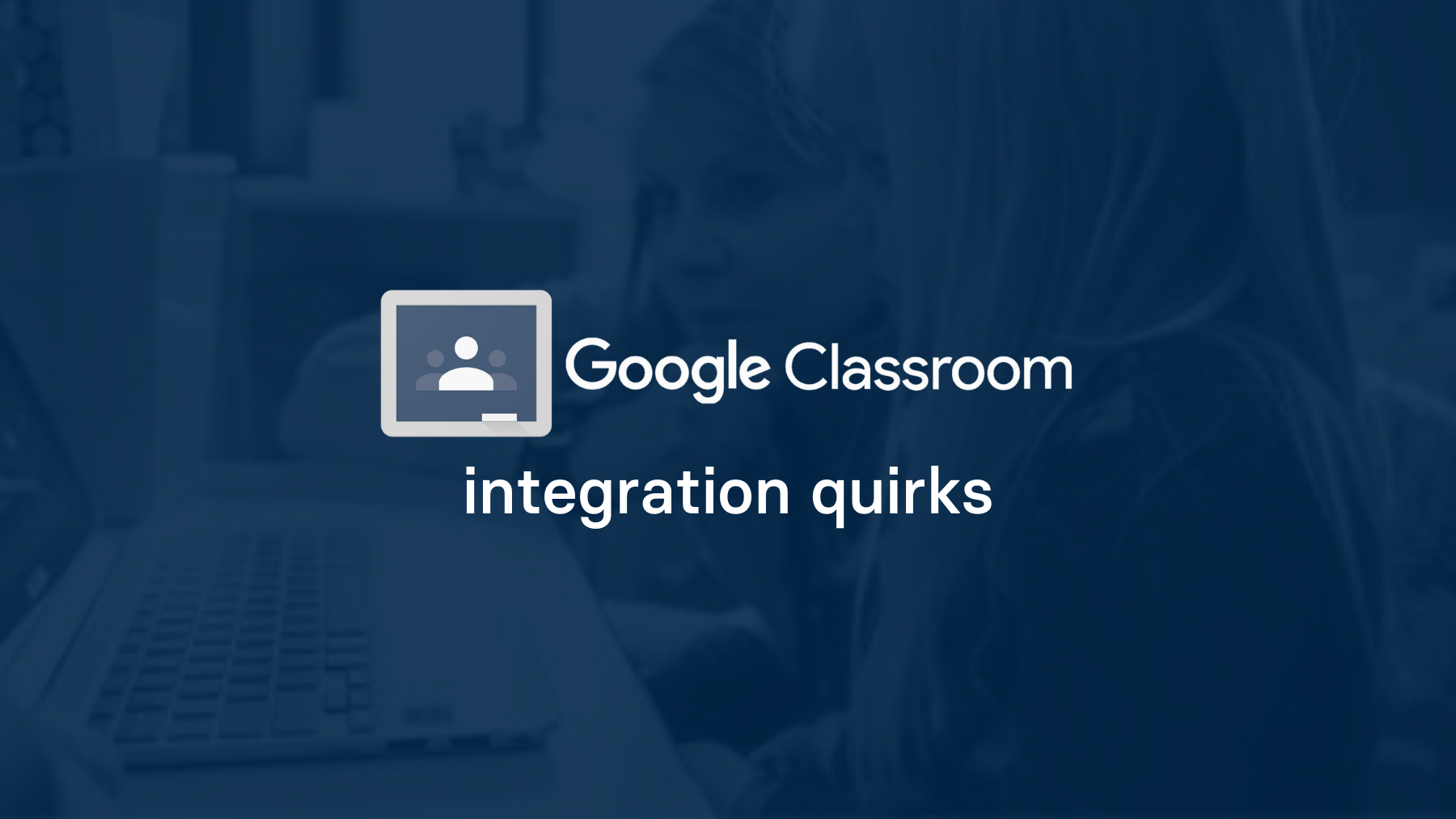A Point of Clarity
As many developers know, Google hosts a range of different products and tools. Google Classroom is one of those products and is known as a popular learning management system (LMS). Google Workspace (formerly G Suite) is a collection of productivity tools (Docs, Slides, etc). Often, people misrepresent a “Google integration” as a connection to either Google Workspace or Google Classroom. An integration to Google Classroom will provide the ability to use integrated functionality (SSO, rostering, grade passback, assignment sync, etc.); an integration to Google Workspace will provide connections to some or all of the Workspace “tools” (read: Google Docs, Google Slides, etc).
When a user creates a Google account, Google grants the user access to many Google Workspace products. Google offers a tailored package for educators of educational institutions, called Google Workspace for Education. Google's Cloud Platform allows developers to implement API requests on behalf of a user's Google account and provide APIs for many of the applications in Google Workspace, including Google Classroom.
No LTI Support
Although Google Classroom is considered an LMS, it does not support the Learning Tools Interoperability (LTI) specification. The LTI specification is a common integration method for third-party applications to integrate with LMS providers for functionality like single sign-on (SSO), rostering, assignment sync, and grade sync. This makes Google Classroom an outlier among major LMS platforms, which typically provide support for LTI.
If a school or district asks for “LTI integrations” but uses Google Classroom, it’s important to clarify that LTI cannot be implemented through Google Classroom. Instead, it might be best to provide better information to the school and help dive into the differences between Google Classroom and Google Workspace LTI. Google Classroom is an LMS, while Google Workspace LTI is a collection of free apps that can integrate with other LTI-compatible LMS providers like Canvas.
The Google Classroom API
While the Google Classroom API can make requests on behalf of a user's Classroom account, developers will have to use other Google Workspace APIs to enable features that are necessary for complete integration. For example, onboarding an entire learning institution that uses Google Workspace for Education might require edtech developers to implement the Admin SDK so they can retrieve an entire list of all users at a learning institution. This cannot be done alone with the Google Classroom API. To build a functional integration, developers must understand how Google Workspace APIs work together, not just how to use the Classroom API.
How Permissions and Scopes Work in Google Classroom
In Google’s APIs, scopes are strings (URI values) that define what data it can request or functionality an app can perform. When an app integrates with Google Classroom, it must declare the minimum set of scopes needed to perform tasks like reading courses, managing rosters, or syncing grades. For example, accessing course data requires one scope, while modifying student rosters requires another. During consent, users see those scopes and decide whether to allow the app to act on their behalf.
Unlike other LMS providers that typically offer centralized permissions models, often managed by IT school administrators, Google Classroom permissions are tied directly to the user’s role and data ownership within the platform. This results in several scope-based quirks to be aware of:
- Teacher-scoped access only: A teacher’s access token can only retrieve or manipulate data related to courses they personally own or teach. You cannot retrieve rosters or course information outside of their ownership without elevated domain-wide privileges.
- Lack of district-wide APIs: Classroom’s API does not expose a master list of courses or users at the school/district level. To onboard an entire institution, developers must pair the Classroom API with other APIs like Google’s Admin SDK or Directory API, and only if the admin has granted the proper scopes.
- Granularity limitations: Google scopes aren’t always granular. For example, classroom.rosters grants full control over class rosters. There’s no way to request "read-only" access for some users and "edit" access for others unless you separate user flows and scopes at the app level.
Rostering Through Google Classroom
Rostering accounts through Google Classroom can be tricky to tackle. As mentioned earlier, developers have to implement other Google Workspace APIs to onboard an entire learning institution. On its own, the Google Classroom API only returns roster data for individual courses. The good news is that many educators will use Google Classroom for their courses and don't require admin-level authorization to use the platform.
Google Classroom is also unique among other LMS providers because it requires users to have a valid email address. Since many third-party applications (read: vendors) identify users through email addresses, developers will not need to build workarounds to implement the Google Classroom API to roster users in the app.
Update | 10.1.25
Read More on Google Classroom Integrations
Here are other articles we’ve written on Google Classroom to help you on your integration journey:
- How to Start a Google Classroom Integration
- What Information is Available Through the Google Classroom API?
- API vs. LTI Integration for Google Classroom
- Introducing Edlink
- Our Mission at Edlink
- What is the Edlink Unified API?
Want to Get Started?
If you're looking for a partner to guide you through developing integrations, then let us introduce ourselves. We're Edlink!

